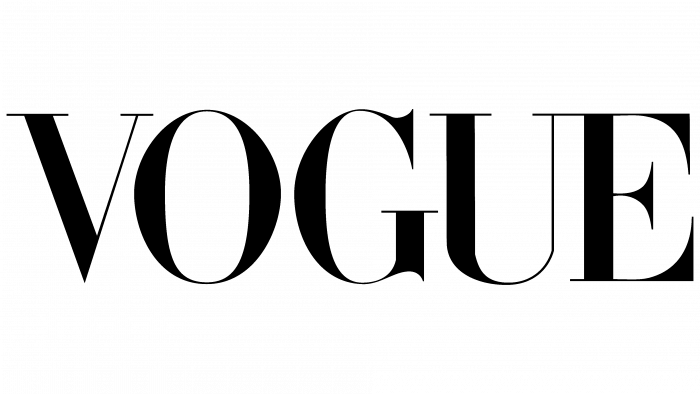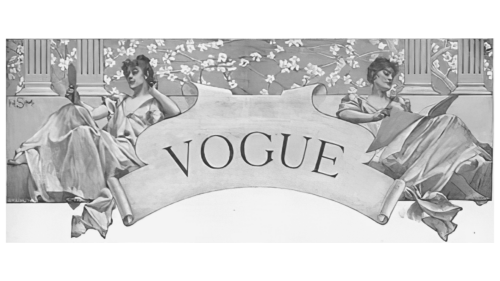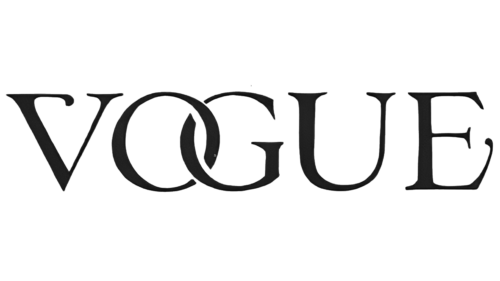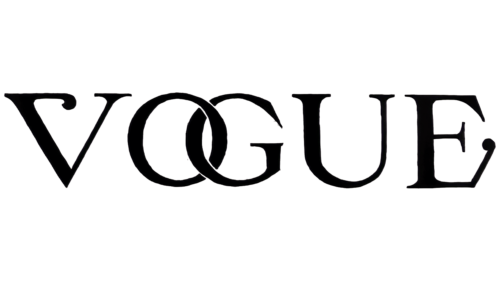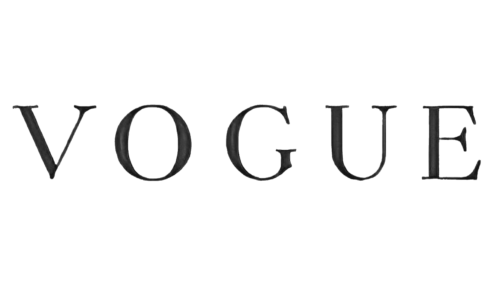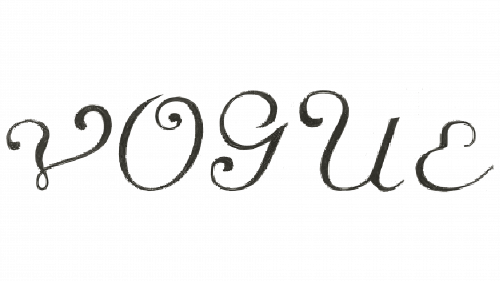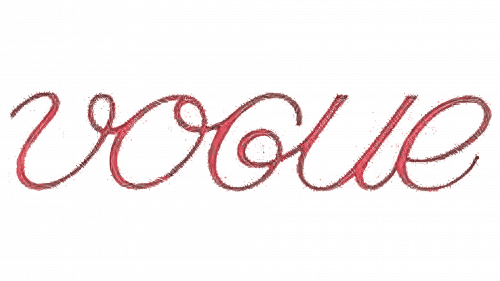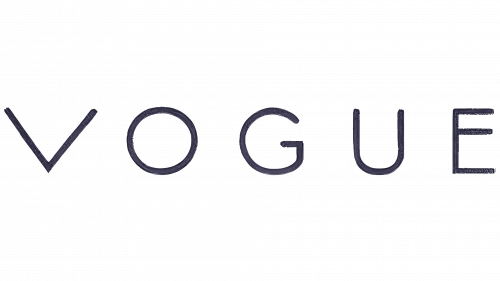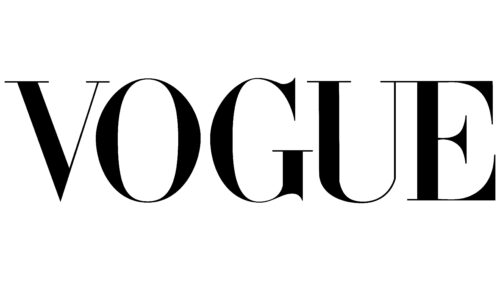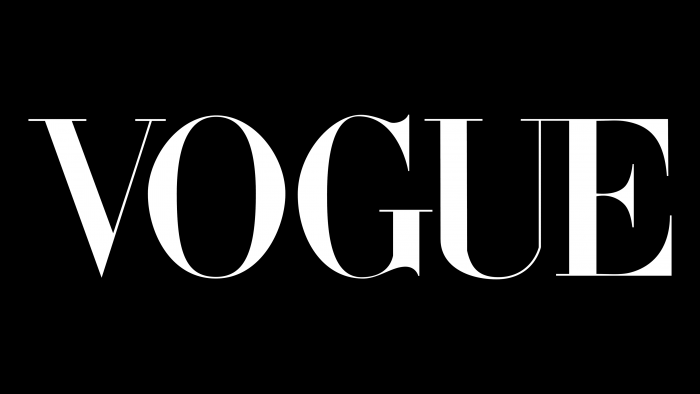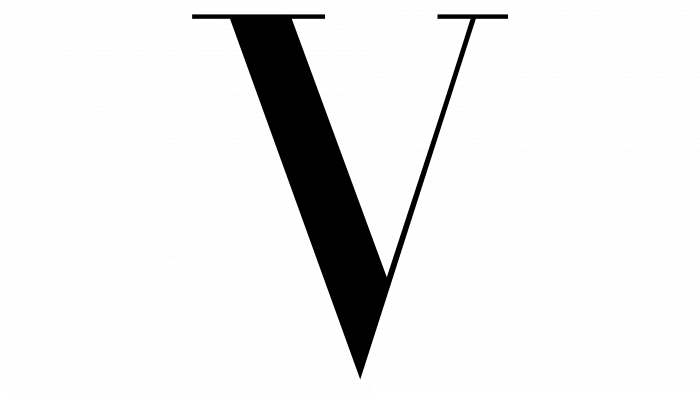Elegance is read in every symbol of the emblem. The Vogue logo is an example of an impeccable style, the ability to place accents and highlight the main thing. The sign represents the leading trendsetter in fashion and beauty. The publication guides everyone who wants to be on top.
Vogue: Brand overview
| Founded: | December 17, 1892 |
| Founder: | Arthur Baldwin Turnure |
| Headquarters: | New York, NY, U.S. |
| Website: | vogue.com |
Meaning and History
The famous Vogue logo, which contains the magazine’s black name, has evolved for a long time. First, the cover lettering was hand-drawn. In each new issue, the designer made a new version to resonate with the thematic content of the articles. In 1909, the weekly changed its target audience. He decided to move to a higher level, so he hired professional artists who portrayed his name in the style of the jazz era or imitated the art deco direction.
1932 saw the first edition of Vogue hit the shelves with a logo in delicate white letters. Designers could still experiment and change the fonts as they liked – from various sans serifs to serifs. In 1955, the publication began to use a typeface from the Didot family permanently.
The modern version of the word mark existed not so long ago, considering that the magazine was created in 1892. It was inspired by the inscription made on the cover in the mid-1950s. Over time, the developers have slightly changed the design to adapt it to fashion trends.
The Vogue logo is characterized by capital letters, long serifs, and a strong contrast between thin and thick lines. All this makes it noticeable on any background, no matter what photo designers use for decoration.
The Vogue brand name contains nothing but lettering. It shows impeccable taste and matches any background – above all, with images from the world of haute couture. The logos that preceded it were not consistent: the weekly experimented with shapes and styles, allowing for drawn elements. Everything changed in 1955 when the editor-in-chief of the magazine decided to make the design utilitarian and consistent. The new word symbol underlined the high status of Vogue as a guide to world fashion.
1892 – 1907
On the cover of the fashion edition, a curved inscription containing its name flaunts. The letters are thin and graceful, like the background on which they are located. This is a wide and curly ribbon with twisted ends. To the right and left of her sit elegant ladies in chic outfits. One looks in the mirror, and the other flips through the pages of a magazine. These characters play a very important marketing role. They emphasize the category of readers that the print edition is aimed at, report on its subject (beauty and everything related to it), and also focus on the accessibility of the magazine to everyone. In the background, columns in the ancient Greek style and flowering tree branches are depicted.
1907 – 1910
After the multi-structured picture, the magazine got a minimalistic version of the logo. She moved from room to room, remaining constant. This is the original title. Sharp serifs and long curls with a dot at the end complement fanciful letters. “O” and “G” are connected like rings, so they look like a monogram located right in the word “Vogue.”
1908 – 1910
The designers bolded the letters, making the logo businesslike, significant, and large. The upper corner of the “G” has become long and sharp.
1910 – 1920
The inscription lost its decorative elements and gained more airiness. To do this, the developers removed dots and long serifs and placed the letters wider than before. As a result, the inter-character space has increased.
1909 – 1914
1920 – 1923
1923 – 1924
1924 – 1940
1940 – today
This vogue cover lettering style has become legendary. The timeless font is refined and business-like, helped by the harmonious combination of narrow and wide stripes in each letter. This combination makes the emblem catchy and sophisticated. The glyphs are so close to each other that the serifs “U” and “E” look like a single element.
Vogue: Interesting Facts
Vogue fashion magazine is a powerhouse shaping fashion, culture, and trends worldwide.
- From Start to Now: Launched in 1892 as a weekly newspaper for New York’s high society, Vogue has transformed into a monthly magazine that’s a major voice in fashion and lifestyle.
- Breaking Ground with Color: In July 1932, Vogue was the first major fashion magazine to feature a color photo on its cover, showcasing its willingness to innovate and embrace new trends.
- Going Global: Starting with a UK edition in 1916, Vogue has launched over 20 international editions, including in France, Italy, Japan, and China, bringing its fashion insight to readers around the globe.
- Iconic Leaders: Since 1988, Anna Wintour has been the editor-in-chief of American Vogue, becoming a key figure in fashion. The magazine has had other notable editors like Diana Vreeland and Edna Woolman Chase.
- The Big September Issue: Vogue’s September issue is the most significant publication of the year, setting the tone for the fashion season. The 2007 September issue was even featured in a documentary, giving a peek into the magazine’s influence.
- Launching Careers: Vogue has been instrumental in the success of many fashion designers, photographers, models, and writers. A feature in Vogue can catapult careers in fashion.
- Beyond Fashion: Vogue also delves into culture, beauty, health, and politics, often highlighting influential women. It’s adapted to the digital era with videos, podcasts, and online articles.
- Met Gala Connection: The magazine is closely linked with the Met Gala, one of the world’s most exclusive social and fashion events. Anna Wintour has been pivotal in organizing this gala, benefiting the Metropolitan Museum of Art’s Costume Institute.
- Championing Diversity: Vogue has recently focused on diversity and inclusion, featuring models of various races, sizes, and ages and addressing social justice and equality issues.
- Embracing Digital: With a strong online presence, Vogue reaches audiences worldwide through its website and social media.
Vogue is a fashion authority continuously shaping how fashion is seen and celebrated globally. Its commitment to innovation, diversity, and quality content keeps it at the forefront of the fashion industry.
Font and Colors
Since the logo has taken on a unified design, the typography hasn’t changed much. This was unnecessary because the Didot typeface was perfect for any cover, regardless of its content. It sometimes alternated with the Bodoni family of typefaces designed by the Italian designer Giambattista Bodoni. Both types of fonts are united by very high contrast between strokes of different thicknesses. Of course, Vogue designers have changed some of the nuances over time. They modified the Didot while retaining the old-fashioned sophistication. In addition, the magazine’s name can be written in the signature Vogue AG grotesque, created based on Avant Garde Gothic and Futura. Its developer is Terminal Design studio.
The main color of the logo is black because it is a classic of good taste. But the fashion edition is not limited to the traditional palette. Editors boldly experiment with a color scheme so that the lettering blends harmoniously with other cover elements – most of all, with the background photo.
Vogue color codes
| Black | Hex color: | #000000 |
|---|---|---|
| RGB: | 0 0 0 | |
| CMYK: | 0 0 0 100 | |
| Pantone: | PMS Process Black C |
